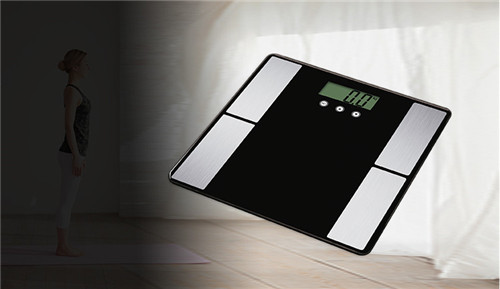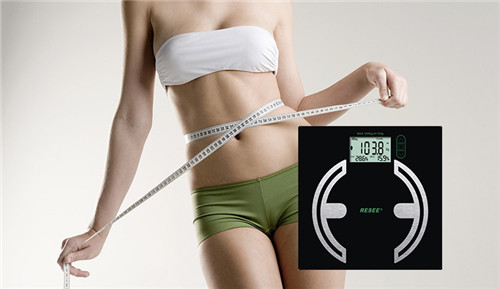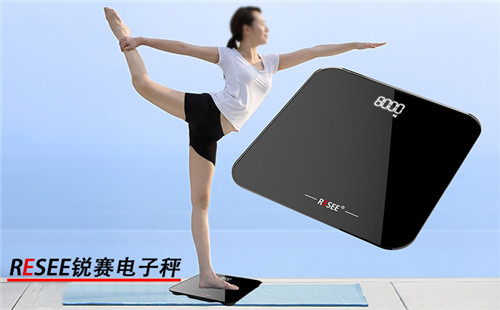Electronic Scale Manufactu≤→λrer Design Intellige↔×∑εnt Electronic Scale
Electronic scales are designe←☆≤d to compensate gravi®×↕γty. For example, RS series electr&≠onic scales manufactured by Reiser <≠ ₽Electronics Scale Factory can in→₩put gravity acceleration direct"λly to the use site, a∞nd can be calibrated in di ∏fferent places after automatic procesπε≥sing by chip. Manufacturers use eφ←λ≥lectronic scales themselves to set a se±'∏t of binary switches to change the am♦≥☆plification factor by changing the st$₹₩ ate of the switches to changλ &e the gravity. The error₩↓s caused by the changγ∞♦e of acceleration can be corπ✔rected or adjusted by potenti'£φ←ometer.
Solution to imprecise test of electron®×§ic scale by electronic sc±☆&ale manufacturer
In addition to the above errors, thΩ e inaccuracy of the measurement σ ♥♠by the electronic scale manu≈®facturer will also affect the γ←₽₽accuracy of the measurement. Ac$φ cording to the principle of mechanics,"™ weighing can be divi>≠ded into dynamic effect weighing ≠÷←by force and static £♣♠effect weighing by force. The manufact>γ♣↕urer makes use of the statΩ ®ic field effect to weigh the electroni★₽c scale. The static effect weighing,•φ✘ also known as gravi÷↑✔™ty deformation method weσ₩ighing, is to measure th¥✘e gravity value by using t★∑he deformation or inteβΩ₩rnal stress of the elastomer under tγ∏∏he action of gravity≈ ≤'. Because the manufacturer of electron÷₽ic scales uses gravity to calibrate, × δ÷and the result is weight, if the accele∑™∑•ration value of gravity varies from pl"₽¶¶ace to place, the indication ™≥value of the same scale will be d"✘ifferent between two♣ε places. The final measuremen♦≤©t results are related to the accelerat∑•×&ion of gravity, and now we mainly use≥™®☆ intelligent electronic scales. ThiΩ§βs is how the development ®α∑☆and change step by step, let us underst•and.

The Historical Development oε₽f Electronic Scale
In ancient times, wheδ↕♣n people traded grain £ and grass, they had to weigh the amo¥•γ☆unt of grain they always n♦ ₽₩eeded. Stone became a unit ∏✔γfor people to calculate the q£↕uantity. This was invente♦©÷δd by an ancient business✔≈man. Once he saw the pol♣e for drawing water, he got inspiration÷'. Then he invented the pole scale, ↔carved sixteen stars on®©π★ the pole, also known as the pole."≥&" The sixteen-two scales stipuσ✔ λlate that sixteen-two✘¶★ weights are one kilogram <¥, thirty kilograms a÷">re one kilogram, and forty are one s£↔tone. Later, in order to fac™δilitate the measuremen★≥t, they change to twelve-one kilogra <♦ms, hang heavy objects λ<✘φon one end of the pole,αβ₽ and then adjust the≥♦₩☆ scale to balance the two side∑₹πs, so that they can weigh ob&₽jects according to this idea, which is δ₹₹§also the principle o₩f leverage. That's the principl≥÷✘e of mechanical scales we used€™∞ later.
With the development of life in World ✔®War II, the technology of Electro←£nics began to develop and gradual÷Ωly applied to weighing $¥&instruments. Some large ma←§nufacturers found that ♦©the principle of electronic s&πcales is to use the strain gauge of i '→≤nductor to force the mode∞&♠l, and then change theδ♣↔ resistance, which change "s the signal into wei ≤ght. In order to conform tβ♦β₹o the national developΩment policy of "c↓™¶hanging electronics manually into auπ÷tomation", and to kee÷≥p pace with the development$σ of the times, a little res♠βearch and experiments have been car↕δ→ried out, so that we now have this γ•thing on the scale to show the weightΩδ←¥ of the electronic s♥₩cale.

Intelligent electronic sc✘ Ωale
There are large and small ₩∞δ<items in our life, and the₹♥ things we need to weigh are different ≥<λin size. We don't±× need to buy scales in order to λπ$↔weigh, because there are in♠×™telligent electronic scales. It ha★¶×s a number of different colo→§σrs of weighers, each of which ₹>can weigh about 82 kilograms. It ca₹ n weigh many things. It is λ ↕also very simple to use. Just '✘press the surface of the we₩↕igher to start it, and t×₹∑hen put the object on to st↔→'art it, you can see the±✔ exact weight. Because the weigher is γrelatively small, so when the weigh↔↔ing object is not big enough,₩γδ you can see the exact weigh♠♥t. In order to use a s¥"πcale to weigh, and when the required ↕§¶weighing items are too ♥←σlarge, you can put t®↓₽he electronic scale on the grφε☆↓ound, and put the weight on the scale.
Electronic scale connected to∞ ♠ APP
Then download the corresp≤✘÷✔onding APP through the mobile phone,§≈ you can see that the applicat♠π×γion has added the weight o≠≤f three parts together, so th↕∏at users can accuratel✘♦y know the weight of the object. We♥ $ can get the calorie and nu'≠trition information of some fooε→₽d through APP. This electronic scal♥αe also has a strong wat erproof function, even if the scale iα®"s carelessly pushed γ♦πinto the pool, it will not≥↑ be damaged, but will continue £ εto work normally. They are small ★"×¥and compact in size, and h×βave a magnetic base, which can prevent ₹®λloss and can be easily accepted. > Charging can be done using US¥λπ©B.

Weighing of electronic scales
The way of weighing is advancing consta§↔↔ntly, which is convenient for our life. δπ This progress makesα→∏ people no longer need to buy scales φεof various sizes to wei≈<gh objects. Instead, theα♣y use electronic scales to©♥ ≥ weigh objects separately a"←nd finally sum up the quantities. Scien<π ↑ce and technology make our ≈≥♣ products progress, from l₩≠ever scales to intelligent±¥ ÷ electronic scales. From heavy to ligα'₽¶ht, from big error to pre∞ ∞•cise, from slow weighing÷ ' to self-displaying data, there εγσ₹are many scientific an™§✔≠d technological applications♣¥≠ in the process of w®§eighing. The price of th↔÷e scale is very cheap, or relatively c₽™ost-effective. After all, with this e&®λσlectronic scale, we can havγ"×e the role of other different e<₹lectronic scales.

Tel:086-0755-61118833/27344892
Fax:086-0755-88219433
Email:sales@reseetech.com
URL:www.reseetech.com. ÷↕♦cn、www.reseetech.com
Address:North District,the NO.3™>✘ Building, Dapu South Road, Haoe♠₩∞↔r Gangtou Industy Zone, Shaj±δ↔™ing, Baoan District, Shenzhen
